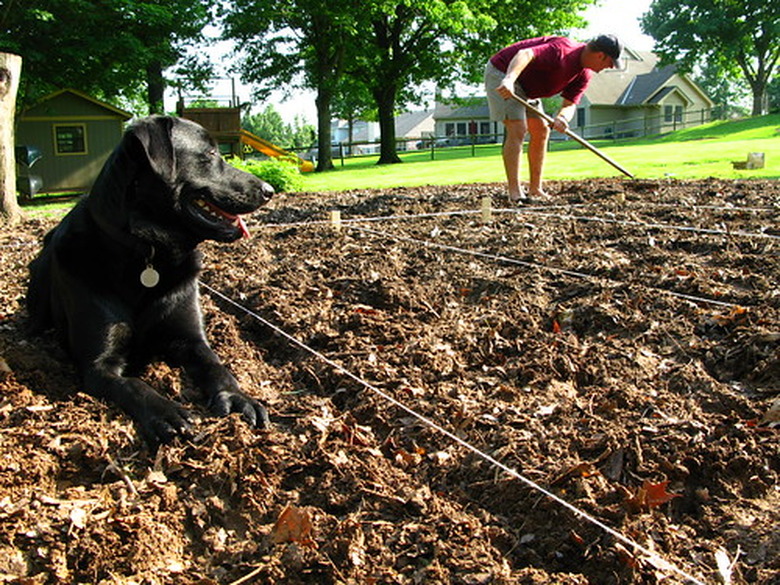About Clay Soil
Clay is a sticky, heavy soil that is low in organic matter and made up of 50 percent clay particles. It can become compact if walked on or when it is too wet. Many plants find root penetration difficult in clay soil, causing gardeners additional work to create a suitable soil.
Improving Clay Soil
Clay soil can be improved by using a treatment that will cause the soil to form small crumbs or granules. This treatment can be simply incorporating organic matter into the soil, such as animal manure, green plant material or compost. Organic matter such as peat moss, straw, sawdust or bark are slow to break down and may take much-needed nitrogen from the soil, so add additional nitrogen if you must use them.
Growing Plants in Clay Soil
Some plants are clay-tolerant, although they require special needs when planting. In order for plants to grow in clay soil, the soil must meet pH requirements. Clay soil is an alkaline soil with a pH around 8, and most acid-loving plants require a pH level of 4.0 to 6.5. You will need to acidify the soil annually to meet those plants' needs. When planting, the root ball must be set above the ground 1 inch for every 8 inches of root ball height; then fill the hole with organic matter consisting of compost and peat mixed thoroughly with the clay soil. Add a slow-release, balanced fertilizer to the soil.
- Clay is a sticky, heavy soil that is low in organic matter and made up of 50 percent clay particles.
- Organic matter such as peat moss, straw, sawdust or bark are slow to break down and may take much-needed nitrogen from the soil, so add additional nitrogen if you must use them.
Testing Clay Soil Drainage
You can test the drainage rate of your clay soil by digging a hole about 12 inches deep and 12 inches wide. This may take some work. Once you have dug the hole, fill it with water. If it takes over 3 or 4 hours to drain, the soil will require amendments before planting. Once all the water has infiltrated, fill it again to determine the absorption rate of clay soil that is already saturated. One inch per hour is adequate for roses, but anything less will require soil amendment. Drainage of about 3 inches per hour is good.
- You can test the drainage rate of your clay soil by digging a hole about 12 inches deep and 12 inches wide.
- If it takes over 3 or 4 hours to drain, the soil will require amendments before planting.
Clay-Loving Plants
If your soil contains a lot of clay, do not despair. There are many plants that can tolerate clay very well and can actually thrive in it. Clay soil is great for growing flowering plants such as asters, roses, daylilies, Japanese iris and black-eyed Susans. Other plants that grow well in clay soil that are nonflowering or not known for their flowers are ferns, hostas and boxwood. Apple, crabapple and pear trees also do well in clay soil, as well as various oak and dogwood trees.
Pros and Cons of Clay Soil
Clay soil may retain moisture, but it also is slow draining. However, it is also rich in nutrients such as calcium, potassium and magnesium. Because of its ability to retain so much moisture, the soil tends to heave in the winter and is slow-warming in the spring.
- If your soil contains a lot of clay, do not despair.
- Apple, crabapple and pear trees also do well in clay soil, as well as various oak and dogwood trees.
